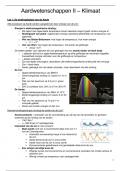APM PMQ Revision Exam Questions with All Correct Answers
APM PMQ Revision Exam Questions with All Correct Answers 1.1 differentiate between types of permanent and temporary organisation structures (including functional, matrix, and project) - CORRECT ANSWER Intro Func: Best for small projs close to BAU ops. Matrix: Best for balancing change initiatives with BAU. Good if more project process is needed. Proj: Best larger, complex projs with multi parties involved. Authority Func: Func Man overall responsibility for proj delivery. Someone from department plasy role of PM. Matrix: PM respons for delivery proj. Func Man respons for line management, wellbeing. Avoid conflicting priorities with effective, reg comms. Proj: PM full respons over work as proj structure made up of different projs. A projectised structure will provide a more variable amount of work than a functional structure as it involves many change initiatives as opposed majority bau in func. Teams/ resourcing Func: work divided into BAU functional workstreams. Work either carried out in functional areas or passed between teams. Projects close BAU skillset. Matrix: pull staff from func teams or contract or from PMO. Proj: staff assigned full time. Permanent mix skills to specific projs. Parts of orgs end with the project. Strength/weakness Funct: team not used to proj enviorn. Poor split of time equally proj & BAU. Teams reluctant to share resource. Matrix: projects more visible to organisation, more collab working unlike functional. Proj: full focus on proj, Routine ops dont exit or support func only. Poor job security, retention of knowledge, can become siloed like functional so not sharing resource due to poor comms. 1.2 explain the way in which an organisational breakdown structure is used to create a responsibility assignment matrix - CORRECT ANSWER When OBS (Hierarchical structure showing the breakdown of work teams and relationships between roles) is combined WBS (Hierarchical decomposition of the work to be executed by the project team to accomplish the project objectives) it clarifies roles against tasks. Then put through RACI Matrix to assign work to individuals with varying levels of respons depending on how involved they need be. 1.3 explain the role and key responsibilities of the project manager - CORRECT ANSWER Delivering the project to time, cost and quality priorities Making timely decisions to ensure project success Inform Sponsor of progress and seeking direction when necessary to aid success Managing sponsor and user expectations Defining and planning the project through the creation of PMP Monitoring and controlling project progress Building, leading and motivating proj team throughout delivery Work packages are allocated and responsibilities defined Keeping the sponsor and senior management informed of any blockers/issues Initiating reviews and assisting the sponsor in decisions to terminate the project if justified Communicating and acting as prime point of contact with team members, other orgs, contractors, suppliers and operations representatives 1.4 differentiate between the responsibilities of the project manager and the project sponsor throughout the project. - CORRECT ANSWER -Strategy/action Defining and planning the project through the creation of PMP Monitoring the project's business environment and reviewing the business case at gate reviews -Iron triangle Delivering the project to time, cost and quality/performance priorities Determining the relative priority of time cost and quality -BC Responsible for delivering Business Case outputs Owns the Business Case -Escalating issues Escalates issues to the sponsor Monitoring high-level project progress and making control decisions when necessary and when escalated by the project manager. -Relationships and influence Manages and motivates the project team Interface between programme/project & the business / senior users and stakeholders -Benefits Ensures outputs are delivered to achieve outcomes and therefore benefits Responsible for benefits realisation, evaluating projects success as completion -Closure Drafting project closure report Sponsor signs-off that it's complete -Reviews and termination Initiating reviews and assisting the sponsor in decisions to terminate the project if justified Terminating the project if necessary, after a gate review
Written for
- Institution
- APM PMQ
- Course
- APM PMQ
Document information
- Uploaded on
- May 22, 2023
- Number of pages
- 43
- Written in
- 2022/2023
- Type
- Exam (elaborations)
- Contains
- Questions & answers
Subjects
- apm pmq
- apm pmq revision exam
- matrix
-
apm pmq revision exam questions with all correct answers
-
1 differentiate between types of permanent and temporary organisation structures including functional
-
a
Content preview
Also available in package deal











